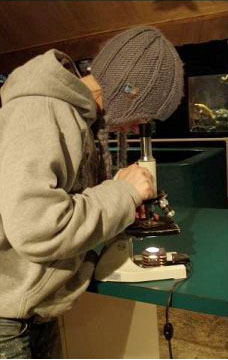

|
1 |
2 |
3 |
4 |
|
PAGES |
|||
|
Minutiae The ocean is full of life: giant gray whales trek thousands of miles between summer feeding and winter breeding grounds, schools of fish are pursued by hungry predators, tide pools burst with life. When we think about the ocean, it is often these large animals that first come to mind. But there is another world, a smaller world, that allows this larger world to exist. Plankton are small plants and animals carried by the ocean currents. Some will grow to be fish or invertebrates; others spend their lives at the base of the food chain. In addition, eggs are laid on rock surfaces, in cracks and crevices, and other creatures live below the surface of the sea floor. All are part of the intricate web of ocean life.
Under the Lens 
We know that certain plankton is more prevalent at specific times of the year. Large amounts of the phytoplankton noctaluca are responsible for toxic "red tides" each summer. Tiffany is looking for other trends, as well as supplying the Interpretive Center with fresh plankton samples for visitors. |
|||||||||||||||||||||||||||||||||||||||||||||||
|
1 |
2 |
3 |
4 |
|
PAGES |
|||
| ||||
| ||||